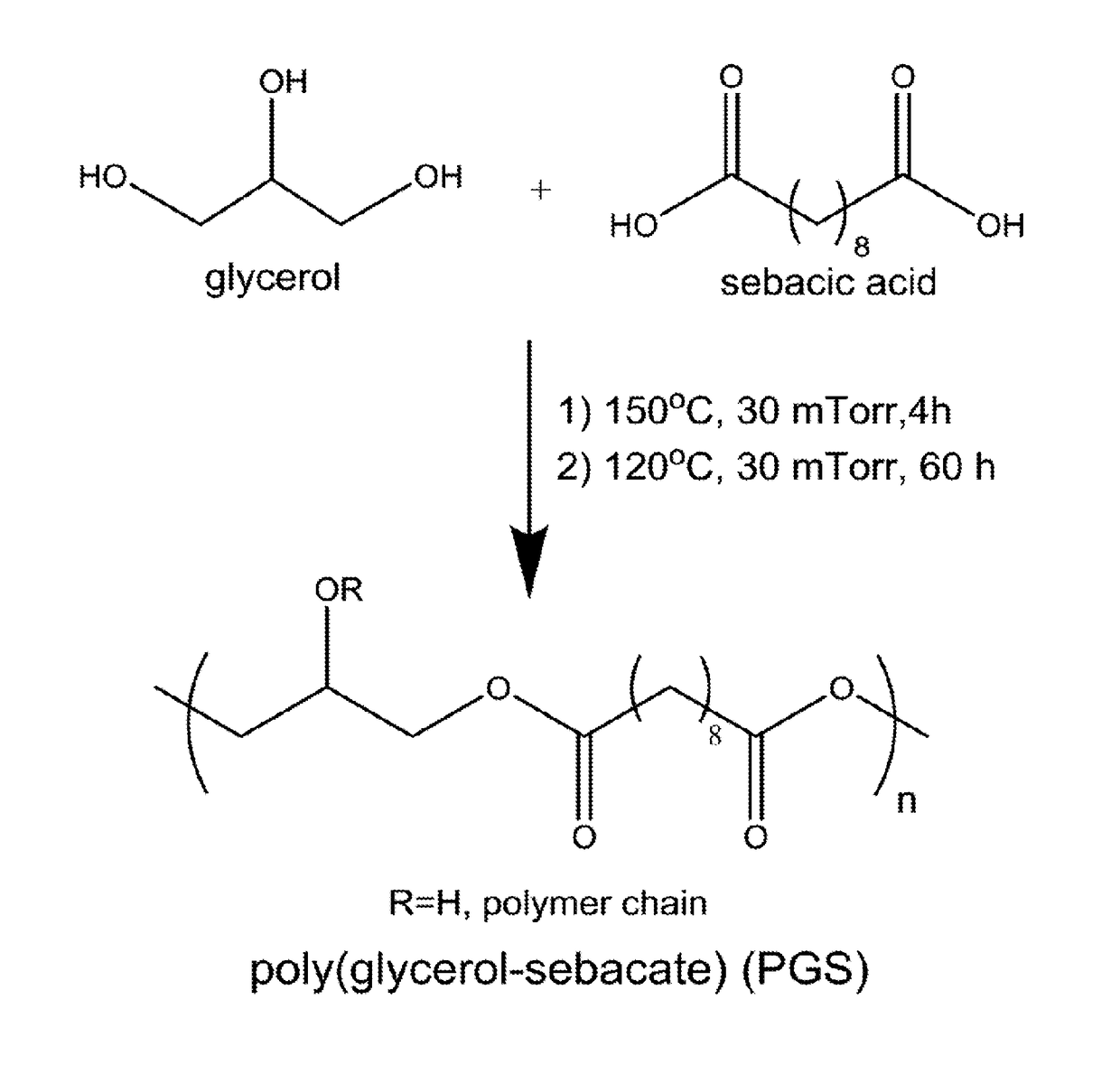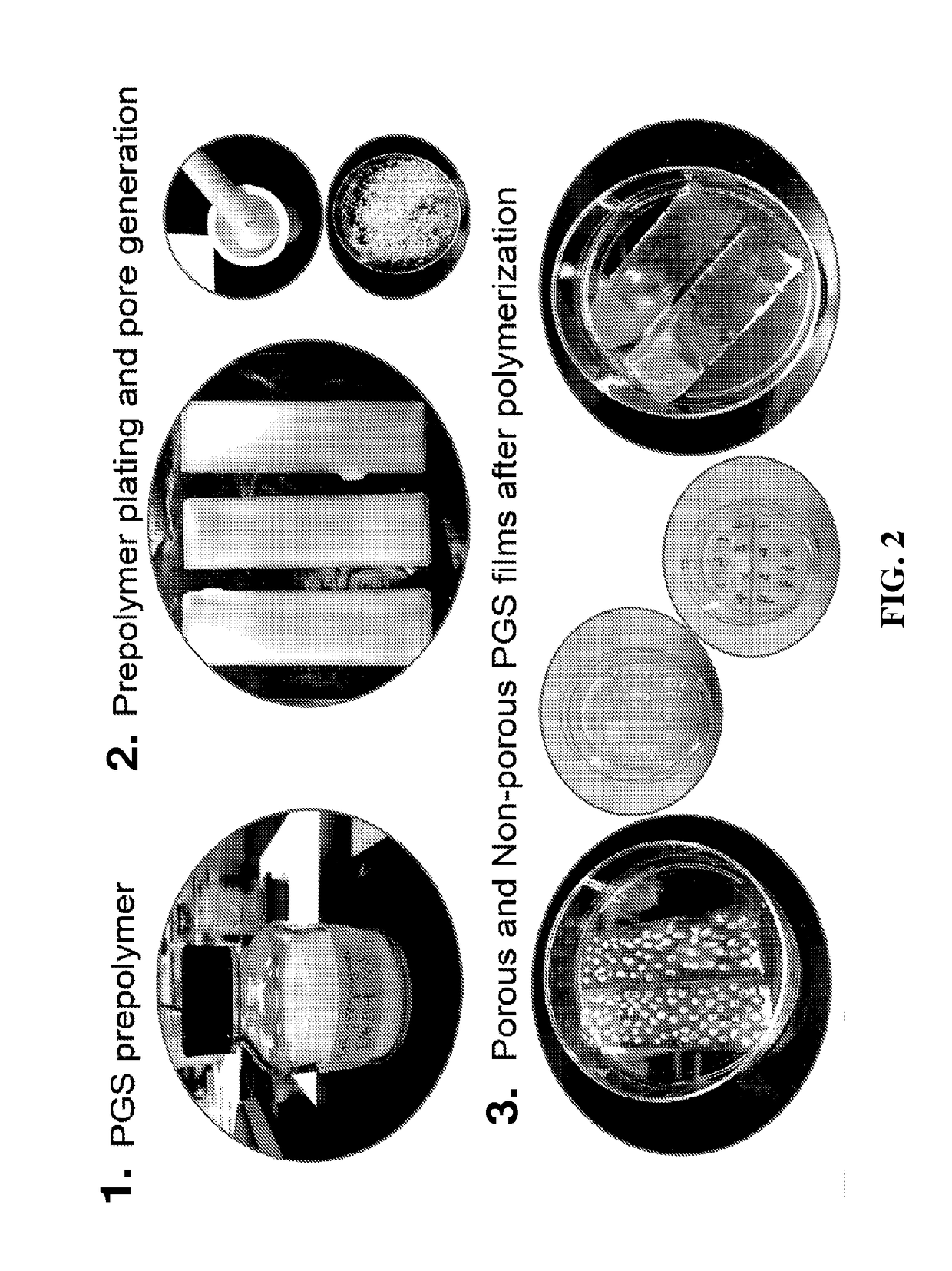Synthesis and use of poly(glycerol-sebacate) films in fibroblast growth regulation
a polyglycerin-sebacate and growth regulation technology, applied in the field of wound repair materials, can solve the problems of excessive fibrosis, adhesion, excessive scar formation, etc., and achieve the effects of reducing scar formation, reducing scar formation, and inhibiting fibrosis
- Summary
- Abstract
- Description
- Claims
- Application Information
AI Technical Summary
Benefits of technology
Problems solved by technology
Method used
Image
Examples
example
[0033]Porous PGS films were generated to increase oxygen availability to 3T3 fibroblast cells and compared to non-porous films. Moreover, this study demonstrates that PGS may serve as a wound film cover or wound repair material and is a regulator of fibroblast growth.
[0034]Initially, the PGS prepolymer is synthesized from glycerol and sebacic acid and plated on glass slides, with and without salt to generate pores (see, e.g., FIG. 2). The pre-polymer coated slides were cured in a 120° C. oven for 60 hours under vacuum. Following curing, the PGS-coated slides were placed in a deionized water solution for 24 hours and PGS films were removed with a razor blade. Mouse embryonic fibroblast cells (3T3 MEFs WT) (ATCC®, Manassas, Va.) were cultured in DMEM (1×) and divided into three test groups: Group I (control), Group II (porous PGS), Group III (non-porous PGS). MTS assays were performed on day 1, 3, 7 and 14 to determine cell viability in each well. Group II and III were divided into tw...
PUM
| Property | Measurement | Unit |
|---|---|---|
| bioabsorbable | aaaaa | aaaaa |
| polymeric | aaaaa | aaaaa |
| physiologically compatible | aaaaa | aaaaa |
Abstract
Description
Claims
Application Information
 Login to View More
Login to View More - R&D
- Intellectual Property
- Life Sciences
- Materials
- Tech Scout
- Unparalleled Data Quality
- Higher Quality Content
- 60% Fewer Hallucinations
Browse by: Latest US Patents, China's latest patents, Technical Efficacy Thesaurus, Application Domain, Technology Topic, Popular Technical Reports.
© 2025 PatSnap. All rights reserved.Legal|Privacy policy|Modern Slavery Act Transparency Statement|Sitemap|About US| Contact US: help@patsnap.com



